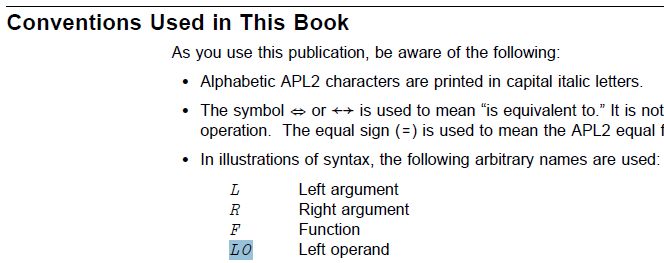The APL2 language reference does in fact make it perfectly
clear how / and friends are treated, namely as operators.
Always. Note:
And then:
Note that this makes APL2 ISO non-compliant. Indeed,
here, GNU APL follows Dyalog and NARS2000:
1 2 3/¨'ABC'
A BB CCC
A BB CCC
While APL2 and APLX give:
1 2 3/¨'ABC'
AAAAAA BBBBBB CCCCCC
AAAAAA BBBBBB CCCCCC
This is because 1 2 3/
is a derived monadic function and ¨ maps the entire
function to each letter.

